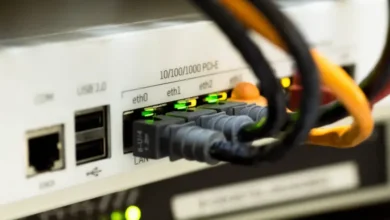Cisco switches | Types and main features of Cisco network switches
Cisco Switches are an important business tool for any network. They connect to a variety of devices, including computers, wireless access, printers, and servers; on the same network in a home or school. An electronic switch enables connected devices to share information and communicate.
Cisco switches are highly secure, provide high performance, comprehensive security, maximum up time, date center and multi site enterprises.
There are two main types of network switches.
- Fixed configuration switches
- Modular switches
Fixed configuration switches:
These flexible Ethernet solutions support a wide variety of deployments, including business campuses, branch offices, midsize organizations, and small and medium-sized enterprises (SMBs), and offer superior road protection, easy operation, efficient power, and expanding user experience.
The moorings provide many ports and are rarely expanded, making them more expensive in general. Customization-lock keys include unmanaged keys, smart keys, and control keys.
Fixed configuration switches broke down in further catagries such as:
- Smart switches
- Unmanaged switches
- Managed LL2 and L3 switches
Smart switches:
These type of switches also known as lightly managed system. This category of switches is the most blurred and the one that changes most quickly. The general rule of thumb here is that these switches offer certain levels of management, QoS, security, etc., but are “lighter” in resources and less scalable than managed switches. Therefore, this makes them an economical alternative to managed switches. In this way, smart switches are better suited to the edge of a large network (with managed switches being used at the core), as the infrastructure for smaller deployments or for low complexity networks in general.
Unmanaged switches:
Unmanaged switches are basic plug-and-play switches with no remote configuration, control or monitoring options, although many can be monitored and configured locally using LEDs and DIP switches. These low-cost switches are typically used in small networks or to add temporary workgroups to larger networks.
Unmanaged switches are plug and play devices that do not require complex configuration. These switches allow Ethernet devices to communicate with each other (such as a PC or network printer), providing connectivity to the network and delivering information where it needs to be. They have a fixed configuration and do not allow you to make any changes to that configuration, so there is no need to prioritize packages. They can be desktop or rack mounted and are a less expensive option for patching connections.
Managed LL2 and L3 switches:
There are following difference between L3 and L2 switches in the following.
L3 Switches do fast switching compared to router switching functionality.
L3 Switches Modify the packet as the packet is passed.
L3 Switches can switch based on differenced services.
L3 Switches are placed in core layer.
L3 Switches are made by ASIC’s ( Application Specific Integrated Circuits).
L3 Switches understand both MAC as well as IP Address.
where as
L2 Switches do switching based on only MAC Addressing.
and rest understood.
Conclusion:
These are main types of Cisco switches, you can select according to your need. I hope this information will be beneficial for you. We’ll come back with more interesting information. Stay healthy stay safe!




